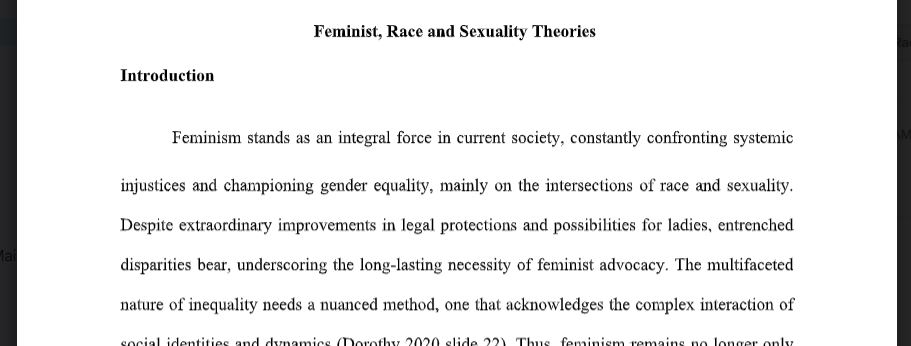Feminist, Race and Sexuality Theories
1.
If genetic differences between people who have different physical characteristics (such as skin color) are
minor, why do we as a society continue to use race as a socially significant category? Who does it benefit?
Who does it not? How could the understanding of race as a social construct change the way race is
understood and the relationships between different races? Use at least 1 contemporary theorist and/or topic
to support your answer.
2.
There have been several waves of feminism, and women have gained a spectrum of legal rights and new
opportunities. Is feminism as an ideology still needed in our society? If so, what would be the key
characteristics of a feminism that meets today’s societal challenges? Use at least 1 contemporary theorist
and/or topic to support your answer.
3.
According to Patricia Hill Collins, each individual derives varying amounts of penalty and privilege from
multiple systems of oppression which frame everyone’s lives. Explain this idea from Collins. Give concrete
examples of moments or situations in which you have found yourself oppressed
AND
concrete examples of
moments or situations in which you have found yourself privileged.
4.
Compare and contrast Judith Butler’s conceptualization of “performativity” with one of the following:
Erving Goffman’s dramaturgical theory, Jean Baudrillard’s simulacra and hyperreality, or Michel
Foucault’s theory on sexuality, power, and discipline.
5.
The cheap and ample fashion options that fill U.S. malls are often made by poorly compensated female
labor abroad (semi-periphery and periphery nations). Utilizing
both
the Made in L.A. documentary as well
as theoretical ideas and concepts from
at least one
of the following theorists: Immanuel Wallerstein,
Herbert Marcuse, Theodor Adorno, Leslie Sklair, and Barbara Ehrenreich and Arlie Russell Hochschild
answer the following questions: are U.S. consumers aware of the labor conditions that make it possible for
them to have cheap fashion? If/when U.S. consumers learn about labor conditions, do they matter to U.S.
consumers? Use theoretical ideas and concepts to support your answers.
Answer preview for Feminist, Race and Sexuality Theories

APA
912 Words
